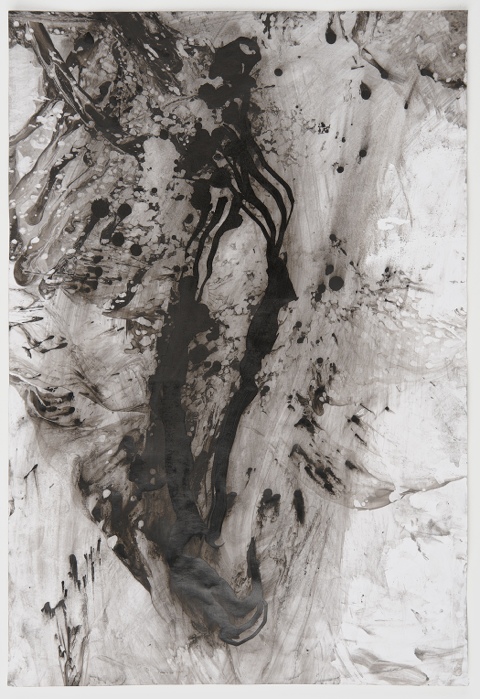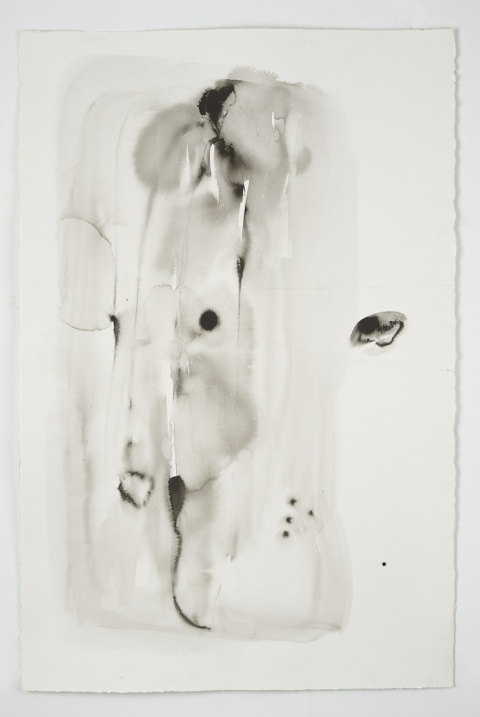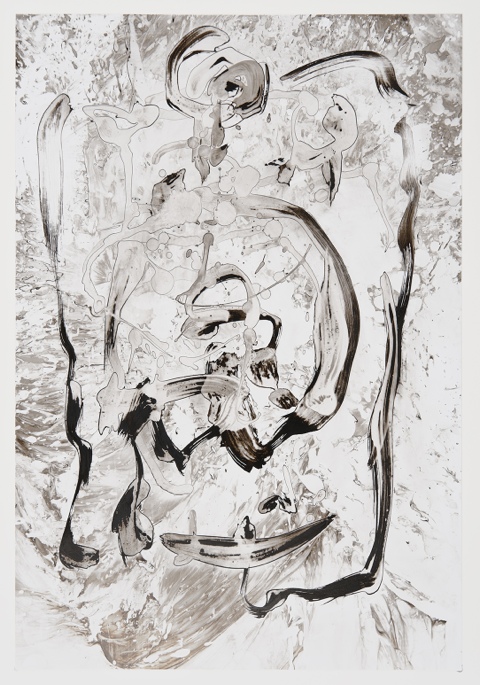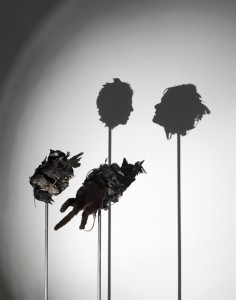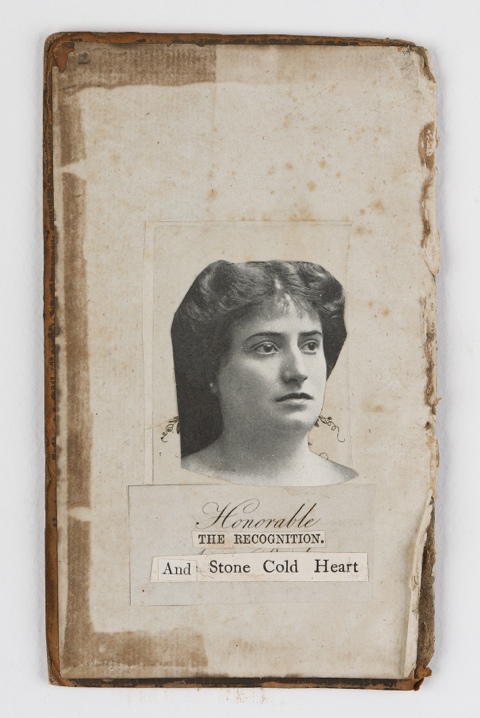
Stone Cold Heart,2012
1.If you weren’t an artist, what else would you be?
A writer, photographer or filmmaker.
2. Can you tell us more about your work and what are the main ideas you would like to express?
I first started the process of dismantling old books in China in 2007 and the collage pieces are an extension of this work. They are a reinvention of the original page with sourced material from domestic books, shipping manuals, legers and encyclopaedias. It is a delicate process and a form of deconstruction/reconstruction. I’ve travelled a great deal and sourced materials in other countries as it informs and opens up the work. I’m interested in time, decay and identity. I am currently working with and engraving text into found objects. I have visited markets regularly for the last three years and have gathered objects I have close association with. In October 2010 I was invited by the Nirox Foundation in South Africa to make paintings for a period of two months. Nirox is situated in the Gauteng district in the World Heritage site The Cradle of Humankind. It is an open forum and centre for the exchange of ideas and communication on a cross-cultural, inter-disciplinary level. The Cradle of Humankind is a World Heritage Site and contains a complex of limestone caves where the 2.3-million year-old fossil of a woman was found. My project was to draw images out of the land, essentially to respond to the land. I work intuitively, subconsciously and am receptive to the materials, allowing the image to Emerge through the process. There’s a kind of dialogue and controlled freedom in the making of work.
3. How do you start the process of making work?
I gather materials, prepare surfaces, dismantle texts, making sure I have everything at hand to work freely and without concerns of what I require.
4. Do you consider the viewer, when making your work?
No, not at all
5. Name 3 artists that have inspired your work?
Susan Hiller, Bill Viola and Louise Bourgeois. Bill Viola’s Reasons for Knocking at an Empty House: Writings 1973-4 and Louise Bourgeois’ Deconstruction of the Father and Reconstruction of the Father are two books that have, to a great extent, informed my work.
6. Name 3 of your least favourite artists.
I’d love to but can’t. It seems much of what happens today is centred around fashion and money. The YBA’s created change and in a sense gave permission for a new language (Damian Hirst’s dissection pieces are some of the most interesting works I know) but there’s a great deal being made now that doesn’t feel authentic. The speedboat at Frieze being sold either as a speedboat or a work of art is surely a clear indication of where we’re at today. Money has become the measure of things.
7. What defines something as a work of art?
It raises questions and confirms beliefs
8. In times of austerity, do you think art has a moral obligation to respond topically?Not necessarily. I think art is about the mirror; a single line or movement of paint or frame of film can reflect back to a person something that deepens their understanding of life, isn’t this the point? That we can go further into ourselves through someone else’s search for truth.
9. Anytime, any place – which artist’s body would you most like to inhabit?
Bill Viola’s as the subconscious resonates throughout his work. He represents humanity through a particular lens and yet somehow he still leaves us questioning.
10. What is your favourite ‘ism’?
Transcendentalism
11. What was the most intelligent thing that someone said or wrote about your work?
“Out of the formless matter of the paint emerge forms which remind us of human beings, forms which suggest the gestures of bodies that are alive with feeling and consciousness. They’re not painted as if they were at a distance – seen within the space of some visual surrounding, an image of a subject in a setting. Instead, they seem up close, almost as imprints of bodies, but still just far enough away to appear as images. This slight shift, between the bare, physical presence of the paint and the intuition of a human figure, could be seen as analogous to that slight shift that exists between the human body and the human being.” JJ Charlesworth, Between Bodies and Images – 2009
12. And the dumbest?
“McVeigh’s art reminds me of toddlers pouring paint on to paper, folding it and making blobby butterfly wings.” Skye Sherwin, Guardian online, October, 2009
13. Which artists would you most like to rip off, sorry, I mean appropriate as a critique of originality and authorship?
Louise Bourgeois, she was an exceptional artist.
14. Do you care what your art costs? State your reasons!
Yes I care but I can’t change things, as an artist it’s not something I focus on, if I did, I would lose sense of the work. Whether I sell work or not I will always be making it.
15. If Moma and the Tate and the Pompidou wanted to acquire one of your works each, which would you want them to have?
Interior II, 2012, Summary I, 2011 and Metamorphosis, 2011
16. What’s next for you?
A panel discussion: Mending: Trauma and the possible function of Art. 8th March, 6.30-8.30, the work will be auctioned March 5th as part of Now & Future Japan.
All Visual Arts (AVA) will be exhibiting new paintings in Camouflage, October, 2012
www.allvisualarts.org/
Whitney will also be Resident artist at All Visual Arts Warren Street space from mid March.
Currently making a short film installation from the footage I took in Syria in 2009.
www.whitneymcveigh.co.uk/

